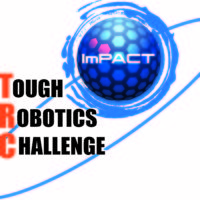 IROS 2018 Workshop
IROS 2018 WorkshopOctober 5, 2018 Palacio Municipal de Congresos, Madrid, Spain
| Time | Presentation | |
|---|---|---|
| 09:00-09:10 | Opening | |
| 09:10-09:40 | Overview of ImPACT Tough Robotics Challenge and Strategy for Social Innovation | |
| Satoshi Tadokoro, Tohoku University / Japan Science Technology Agency | ||
| 09:40-10:10 | ImPACT-TRC Thin Serpentine Robot Platform for Urban Search and Rescue | |
| Masashi Konyo, Tohoku University | ||
| 10:10-10:40 | Development of Tough Snake Robot Systems | |
| Fumitoshi Matsuno, Kyoto University | ||
| 10:40-11:00 | (Coffee Break) | |
| 11:00-11:30 | Recent R&D Technologies and Future Prospective of Flying Robot in Tough Robotics Challenge | |
| Kenzo Nonami, ACSL | ||
| 11:30-12:00 | A Dual-Arm Construction Robot with Remote-Control Function | |
| Hiroshi Yoshinada, Osaka University | ||
| 12:00-12:20 | Analysis, Testing and Evaluation Methods for Improved Human Factors in Robot Systems | |
| Robin Murphy, Texas A&M University | ||
| 12:20-13:40 | (Lunch Break) | |
| 13:40-14:10 | WAREC-1 — A Four-Limbed Robot with Advanced Locomotion and Manipulation Capabilities | |
| Atsuo Takanishi, Waseda University, Kenji Hashimoto, Meiji University | ||
| 14:10-14:40 | Cyber-Enhanced Canine | |
| Kazunori Ohno, Tohoku University | ||
| 14:40-15:10 | New Hydraulic Components for Tough Robots | |
| Koichi Suzumori, Tokyo Institute of Technology | ||
| 15:10-15:30 | Choreonoid: An Open Source Simulator for Disaster Response Robots | |
| Fumio Kanehiro, AIST | ||
| 15:30-15:50 | Field Evaluation and Safety Management of ImPACT Touch Robotics Challenge Evaluation Exercise for Robot Innovation | |
| Tetsuya Kimura, Nagaoka University of Technology, Raymond Sheh, Curtain University | ||
| 15:50-17:30 | For the Future Challenge – Interactive Session for Q&A and Discussion |
ImPACT Tough Robotics Challenge is a national project of Japan Cabinet Office (period: 2014-18, researchers: 62 PIs and 300 researchers, budget: 30 million USD in total) that focuses on tough technologies of robotics to give solutions to disaster response, recovery and preparedness. This workshop introduces the outcome of the ImPACT-TRC.
Natural and man-made disasters are a serious problem for our society. Robotics is widely recognized as potentially effective countermeasure to solve this problem. It has, however, limited capability due to the fragility of this technology. Many robot technologies can work only under well-prepared conditions, which do not occur in disaster sites. This project aims at making such technologies tougher by removing constraints. For example, robots must have high accessibility in extreme conditions, which is achieved by synthesizing high-performance mechanisms, sensing, intelligence, actuation, human interfaces, etc. Sensing in adverse conditions is important, e.g. hearing a noise, SLAM in a narrow space, understanding the situation by touching the complex field. Strong mechanisms and high durability are not an objective of this project.
It consists of subprojects of six types of robot platforms and several component technologies integrated with the robots. The following are the major achievements of our technical research and disaster application.
1) Cyber rescue canine, digitally empowered rescue dogs
– Cyber rescue canine suits for monitoring dog’s behavior and commanding it to move
– Lightweight suits avoiding dog’s fatigue
– Noninvasive methods for commanding the dog
– Discovery of personal effects by camera image
– 3D-SLAM irrespective of rapid motion of the dog
– Estimation of the level of the dog’s enthusiasm
– Regular exercise with Japan Rescue Dog Association
2) Serpentine robots for search in debris
– Serpentine robot that can crawl and levitate in few-cm gaps to investigate in piles of rubble
– Fire-fighting serpentine robot flying into buildings to extinguish origin of fire
– Levitation of serpentine by air jet or water jet
– Hearing victim’s voice by removing noise in debris
– Touch sensing in confined space in debris for teleoperation
– Visual and auditory 3D-SLAM in narrow confined space
– Used in Fukushima-Daiichi in December 2016 – February 2017
3) Serpentine robots for plant/infrastructure inspection
– Mobility of serpentine robot in ducts, in/out of pipes, on uneven terrain, and on vertical
ladders
– Omni gripper that can grasp wide variety of targets including sharp edges without
positioning
– Climbing 1 m step by 1.7 m body length
– SLAM in pipes
4) UAVs for gathering information in wide area of disaster area
– Robust flight under difficult conditions, i.e. strong wind 10 m/s, rain 100 mm/h, change of
payload, and stop of propellers
– Hearing and positioning voice coming from ground during flight
– Gripper for carrying luggage and roosting
– High-precision 3D-mapping
– Used in Northern Kyushu Heavy Rain Disaster in July 2017
5) Legged robots for plant/infrastructure inspection in risky places
– Tough 4-legged body for plant inspection
– Robot hand of 30 cm size that can keep grip of 50 kg loads without electricity
– Opening/closing valves with high torque 100 Nm
– Mobility with 4 legs, 2 legs, crawling movement, and climbing vertical ladders
6) Construction robots for recovery tasks that require both high-power and preciseness
– Double-swing dual-arm mechanism for both high-power and preciseness
– High precision control with low-friction hydraulic cylinders
– Force and touch sensing without sensor at the end-effector
– Bird’s-eye view images for teleoperation by drone directly and by multiple on-board cameras
virtually
This workshop introduces the above achievements in detail, as well as its background, backbone concept, scientific/technical inventions and findings, field evaluation, and application to disasters.
The following book will be published from Springer in 2019.
ImPACT Tough Robotics Challenge
– A National Project of Disaster Robotics Aiming at Social Innovation in Safety and Security –
Satoshi Tadokoro, Tohoku University / ImPACT-TRC Program Manager
Fumitoshi Matsuno, Kyoto University
Japan Science and Technology Agency (JST)
International Rescue System Institute (IRS)
tadokoro at rm period is period tohoku period ac period jp